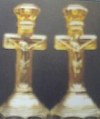Hobnail Variant Vase
Hobnail Variant Vase
HOBNAIL VARIANT VASE #507
(As discussed in: San Diego Club Newsletter-April 1998 and reprinted: ICGA Newsletter-June 1998)
Much discussion has transpired concerning whether the Hobnail Variant Vase is Fenton or Millersburg. Diane Fry, never being one to leave a stone unturned, seems to have gotten to the bottom- line on this controversy. She has given us permission to reprint in our newsletter the information that was issued in the San Diego County Carnival Glass Collectors bulletin, Vol. 14 - No. 1, April 1998. The editors note that is included in the reprint is by Diane Fry. Thanks, Diane, for allowing us to use this information.
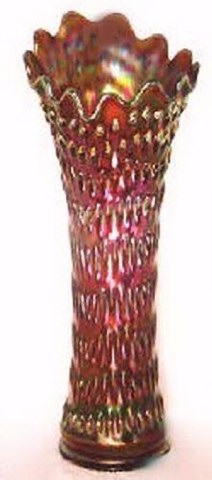 |
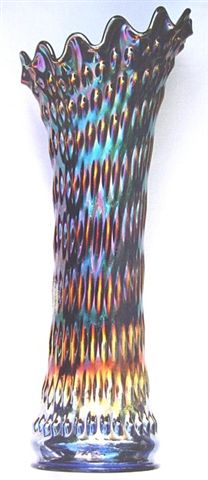 |
19 inch purple Rustic Variant Funeral
7 inch opening
|
20 inch blue Rustic Variant
Funeral Vase
|
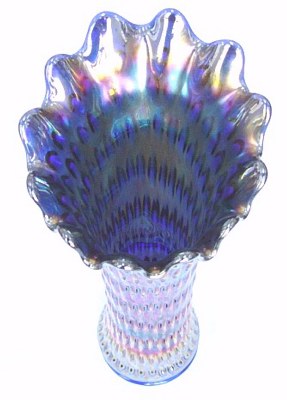 |
|
7 1/4 inch opening on the blue VARIANT FUNERAL
|
|
CORRESPONDENCE:
11/17/97
Diane:
Just a note in regard to the Hobnail Variant vases and the Millersburg attribution. If one looks at the Butler Bros. ad shown on page 118 of "Fenton, the First 25 Years," the vase is pictured in an assortment of Fenton footed bowls and called a "Rustic" pattern vase. Heacock indicates a 1925 date for the catalog (speculative). Back on page 104 - same book - is a circa 1911 reprint of vases known to be Fenton. The vase is listed as #507 pattern. In counting the flames (9), hobs in flame (9) and the rows (11), both reprints match the characteristics of Hobnail Variant.
I understand there has been a continuing discussion of the vase on the Internet. In October, Gary Braden and Harold Cox brought their vases to the Hoosier meeting and a discussion occurred about them. It was the consensus that they appeared to be Fenton. Harold had brought his white vase, along with marigold, blue, green and purple; Gary his blue. I have one in green which certainly doesn't have the Millersburg finish. It resembles the green of Fenton and its typical iridescent treatment.
The same catalog reprint on page 104 is also shown in Whitmyer's book, "Fenton Art Glass." It's shown on page 89 of that book in a "computerized color reprint." On the facing page is a discussion of Rustic vases and a list of their colors.
This letter ought to create a bit of controversy! One can draw his own opinion Lee Markley
Editor's Note: Could the mould have been used by Fenton during 1911, then used by Millersburg for a short period of time, reverting back to Fenton manufacture following the demise of Millersburg? This seems to be the answer for use of Fenton colors and finish on some, and others which could certainly be claimed as Millersburg color and finish, ..just as the two which John Lee owns in green. This theory might account for the lapse of years between 1911 - 12 and 1925, when NO Butler Brothers ads appear with that particular vase accompanying other known Fenton patterns??
December 8, 1997
Diane Fry, Secretary
5395 Middleton Rd
San Diego CA 92109-1525
Dear Diane:
It's always a real delight when the San Diego County Carnival Glass Collectors newsletter comes. I've received the December 1997 letter with the special message written on the front saying, "Merry Christmas, Frank. Each of your newsletters seems to outshine the rest of them.
Reading your letters is always a real learning experience. The photographs are great, and the articles are interesting and authoritative. Now, after all those nice words, I think you should have some additional information.
I read John Lee's interesting articles about the Millersburg Hobnail Variant Vase. I noticed particularly the paragraph that says, "The mould drawings for these vases were found among the Millersburg papers. This is the evidence for its acceptance as a pattern made by the Millersburg Glass Company."
Hobnail Variant Vase
(Continued)
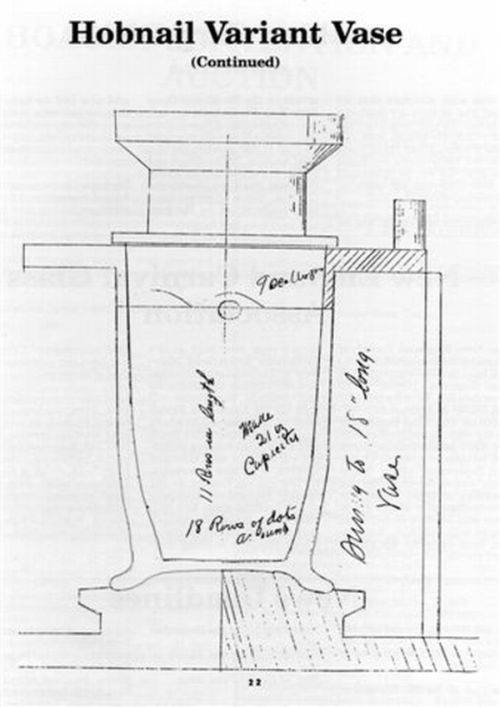
Mold Drawing
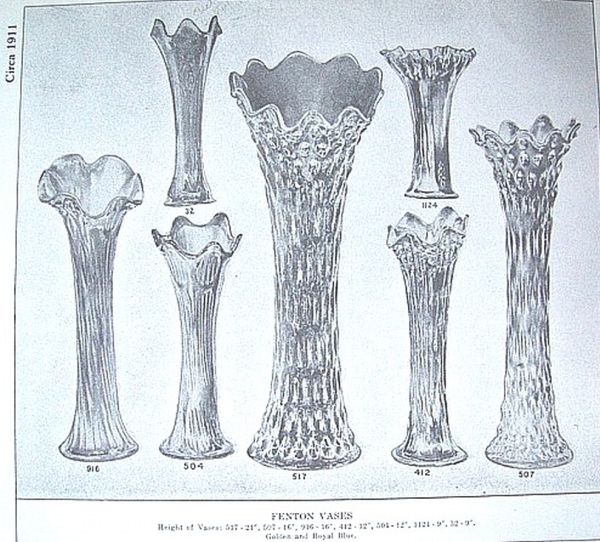
Fenton Catalog ad-1911, #507-16 inch Rustic and #517-21 inch Rustic
Some Carnival Glass collector told me that Bill Heacock is supposed to have told somebody that the drawing for the vases was found among the Millersburg drawings. Let me tell you about that.
More than thirty years ago, Eugene Bock and his wife, Clara, came to see me. Eugene was employed by a newspaper in Anderson, Indiana, and had become interested in developing information about Albany Glass. In the course of his travels, he had come across a bunch of mould drawings that had been made by the Hipkins Novelty Mould Works. He had the drawings with him and told me he thought I would be interested in them and was willing to let me have them because they didn't have anything to do with his Albany Glass research. That's the way the Fenton Glass Museum acquired the mould drawings.
There were drawings from Millersburg, Fenton, Beaumont Glass, the Crystal Glass Company, and a number of other different glass companies all in this one container. I now have those drawings in a fireproof file in my office. All of the drawings that we could identify as Millersburg are in a separate paper folder. Every Millersburg drawing that we have has an identification on it saying either "Millersburg Glass Company" or MGCompany" or, in a few cases, "OKHFW" (Those are the initials of H. F Weber who worked with John Fenton at Millersburg." We have another folder which has the Fenton drawings in it. A third folder has drawings from all other glass companies. Most of those drawings have some identification, but a number of them have none. But in that manner, I have no doubt that Bill Heacock saw a mould drawing in there for the vase described in John Lee's article, but it was in the larger group of drawings before we had separated them into Millersburg, Fenton, and other factories categories.
I'm sending you a photocopy of the drawing for the vase that I think Bill Heacock was talking about. It has no identification on it showing what factory it was made for. All of our drawings that we can identify as Millersburg do have identification. Notice that there are eighteen rows of dots around the piece, eleven rows in length, nine scallops showing a dot in each scallop, and a statement that says "Swing to 18" long vase." It also says, "Make 21 ounce capacity." That's all the writing that appears on the vase. No dates, and no indication of what company it might have been made for.
I'm also enclosing a photocopy of page 6 of a Fenton catalog that was issued around 1911 or 1912. Please notice the rustic pattern piece, #517 (the 21" funeral vase known as Fenton Heavy Hobnail Vase when it's not swung and known as the Fenton Rustic Vase when it is swung). That is not the vase shown in this mould drawing. However, notice the 16" vase #507. It has eighteen rows of dots around it, eleven rows in length, nine scallops, and a dot in each scallop. It shows up on our 1911 inventory. It is also a part of the Massive Iridescent Vase assortment 1C2117 listed in the Butler Brothers catalog in 1911. I have one of these vases sitting in front of me. It's about 17" high to its tallest point, perhaps 15 1/2" to 16" at it shortest point, and it's 4 1/2" in diameter at the bottom.
Could it be that the "Millersburg Hobnail Variant Vase" is really Fenton's #507? I notice that the Butler Brothers catalog lists it as being made in green and amethyst, and the Fenton catalog lists it as being made in golden and royal blue. It's possible that the vases for Butler Brothers were being offered to them in two colors that were not in the standard Fenton catalog.
Thought you'd like to know.
Sincerely,
s/Frank
Frank M. Fenton ---- FMF/am
FENTON RUSTIC VASES
Rustic Funeral Vases made by Fenton do not have those ( ) marks resembling bark in the design, as do the Northwood Tree Trunk vases. The design is a series of hobs.
The following information was written by George E. Thomas of Northern California, and has been published in several different Club newsletters. George has been the eminent vase collector of all time for at least thirty years. His collection is vast beyond belief and his knowledge is second to none. Listen up as this man tells you all you will ever need to know about statistics regarding these vases.
~~~~~~~~~~~~~~~~~~~~~~~~~~~~~~~~~~~~~~~~~~~~~~~~~~~
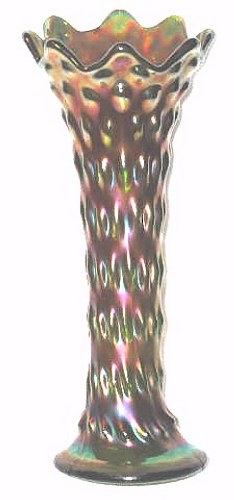 |
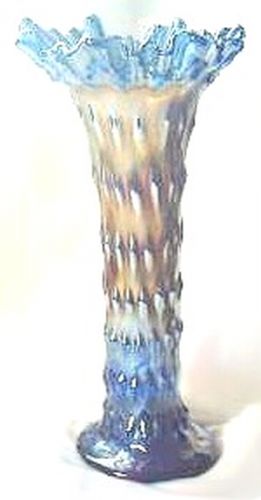 |
9 inch Amethyst Rustic Vase
|
9 inch blue Rustic vase with Candy Ribbon Edge
|
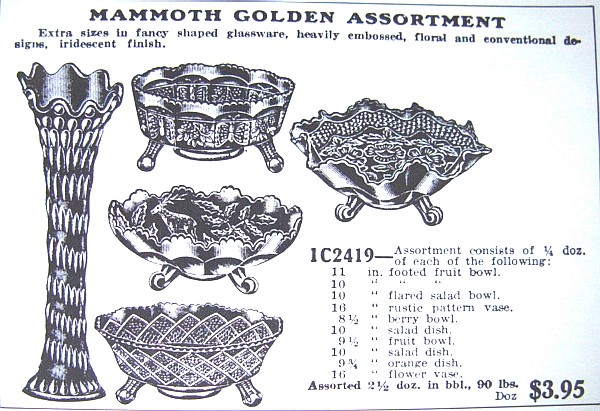 |
|
1925 Butler Bros. ad-All confirmed Fenton patterns. Shows 16 inch Rustic vase
|
|
*Carnival vases have become increasingly popular. It is hoped this article will assist those inquiring into the different sizes of Rustic vases.
Rustic is one of the more plentiful swung vases and is found in many different base sizes and colors, although I can't recall having seen any in ice blue or ice green. The base size designates the category of swung vases. When describing these categories, I have used the number of flame points (at the top of the vase), rows of knobs (the number of knobs around the vase) and columns of knobs (the number of knobs from the top to the bottom of the vase). The heights will vary in all swung vases.
FUNERAL VASES: Base 5 ¼ with no band at the base. Heights from 18 to 22 or more. These have 10 flame points, 11 rows and 21 columns of knobs. These were swung from the Rustic Hobnail (Jardiniere) vase. The jardinière has straight sides and is 7 5/8 tall. I have not seen the jardinière in any color except white, which I own. The swung vases are seen in green, which is rare; scarce in amethyst, blue, marigold and white.
FUNERAL VARIANT VASES: Base is 5 ¼ with 1 to 1 ¾ band above the base and before the first row of knobs. The band varies due to it being stretched when the base was swung. Heights from 18 to 24. These have 12 flame points, 9 rows and 30 columns of knobs. These vases are more rare than the regular funeral vases. I have them in amethyst, blue, green and marigold.
MID-SIZE VASES: Base 4 1/8. Height 12 to 18 These have 9 flame points, 7 rows and 24 columns of knobs. These vases come either in the regular flared top or slightly flared with a tightly crimped edge. These are scarce in amethyst, blue, green and marigold.
MID-SIZE VARIANT VASES: Base 4 1/8. Heights from 12 to 18. These have 9 flame points, with 1 row of knobs (one in each flame point) and 10 rows of 18 knobs with 18 columns of knobs. These are scarce in amethyst, blue, green and marigold. Some people have attributed this vase to Millersburg. When compared with the mid-size vases, the color and iridescence looks the same. Therefore, I believe this to be a Fenton vase. In Heacock's Fenton Glass, The First Twenty-Five Years, page 104, vase #507, is further proof.
STANDARD VASES: Base 3 1/8. Heights from 6 to 11. These have 8 flare points, 9 rows and 15 columns of knobs. The 6 vase is slightly flared at the top and looks like it was never swung, so this may be the size of the vase before swinging. These vases come either in the regular flared top or slightly flared with a tightly crimped or candy ribbon edge. Very rare in peach opal and honey amber. Rare in red and lime green opal. The red vases I've seen have the crimped top. Scarce in white and available in amethyst, blue, green and marigold.
In conclusion, please bear in mind that these were my personal opinions, when I wrote the article in late 1991. I have revised it in late 1994 to include colors not previously listed. The measurements used are from vases in my collection, so if you have other base sizes or colors, I would appreciate hearing from you. Constructive criticism, additions or corrections to the content of this article are always welcome.
NOTE: These combined writings are presented for your enlightenment. When information is offered by those who know firsthand whereof they speak, the rest of us can benefit in supreme fashion. Frank M. Fenton, the manufacturer of, and George Thomas, the vase collector supreme are next to impossible to disagree with when discussing Fenton vases. How thankful we should all be, that they have offered their knowledge so willingly and completely.
Dean & Diane Fry~~8/04
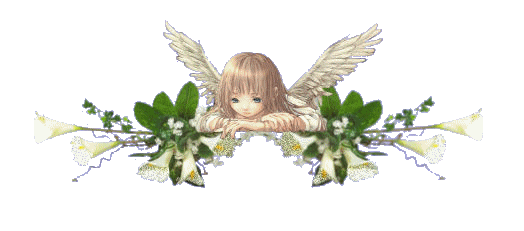
Lord, help us to appreciate
The work that others do,
The service given from their hearts,
Their sacrifice for You. ~~Sper

Should you care to contact the Frys, their email address is:
Search Our Sites
back to Carnival Glass 101
Our other sites you may enjoy:
Everything you EVER wanted to know about Indiana Glass
Great Reference for Newer Carnival Glass.
Complete Glassware Catalogs Available to Download
Questions? Comments? Suggestions? Broken Links? Corrections?
Your Friendly Webmaster is here to help!
